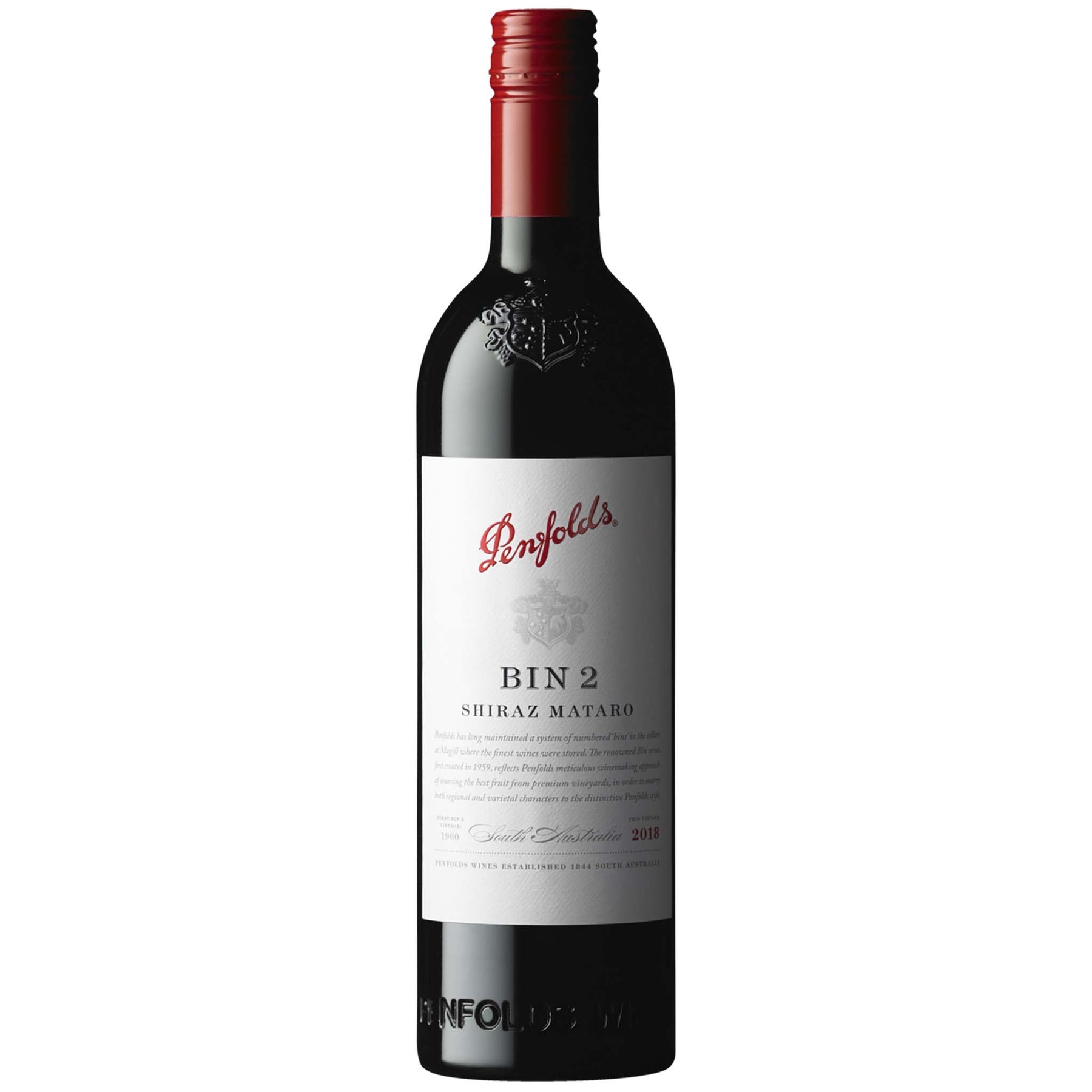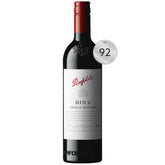

Penfolds Bin 2 Shiraz Mataro 2016
Style: Red Wine
Varieties: Shiraz (85%), Mataro (15%)
Closure: Screwcap
Penfolds Bin 2 Shiraz Mataro 2016
Warehouse
34 Redland Drive
Vermont VIC 3133
Australia
Critic Score: 92
Alcohol: 14.5%
Size: 750 ml
Drink by: 2030
Bin 2 was first released in 1960, yet was temporarily discontinued in Australia in the 1970s at the height of the white wine boom. The Bin 2 blend of Shiraz and Mataro is still relatively uncommon in Australian table wines. Also known as Monastrell or Mourvèdre, Mataro was introduced to Australia in the 1830s. It is valued by winemakers for its blending attributes, adding complexity and palate grip. Interest in Bin 2 has grown as the popularity of traditional Rhône varieties and blends continues to flourish.
"If you're looking for a good Penfolds red to buy and to drink then I'd recommend that you seek Bin 2 out. It's kind of the new Bin 28, in my mind, if not in style then in purpose. It delivers the Penfolds house style with richness and aplomb. It's bold and dark, creamy and concentrated. This wasn't bottled at the time of the annual tasting so a review bottle was sent: I opened it and promptly polished off more than I'd care to responsibly admit. It swooshes through the mouth with confidence and ease. Buy." Campbell Mattinson
The 2016 Bin 2 Shiraz Mataro was sourced from vineyards in Wrattonbully, Langhorne Creek, McLaren Vale, Padthaway and Barossa Valley. The wine was matured for 12 months in seasoned American (52%) and French (48%) oak.
"Nose: Savoury, rather than fruity … albeit raspberry, pomegranate and satsuma plum aromatics do make their presence felt! At this youthful stage, meaty pan scrapings laced with cardamom and a myriad of other spices suggest a blend sourced from more than one site, more than one variety. A hint of dusty oak … but only a hint!
Palate: Meshed and well-integrated shiraz and matarofruits, brimming with flavours of cured meats -notably venison, pistachio terrine. Tannins and acidity draw out finish these rounded tannins couple effortlessly with remnants of reluctant grainy oak. This feathery tail flares out on the finish –no doubt aided and abetted by a crunchy and assertive mataro15% blend shareholding. Peak Drinking: Now-2024.
Vintage conditions: Autumn and winter were dry and cool across South Australia. Record-low rainfall prevailed through September to March. The start of the growing season was slightly delayed in the Barossa Valley and other warmer regions. Warm conditions prevailed in the early part of the summer allowing vines to develop healthy canopies and good bunch set. Some late rain in January and early February was a welcome relief. Temperatures in spring and early summer were above the long-term average, resulting in an early harvest for shiraz. Cooler conditions followed from mid-February which suited the later ripening mataro. Grapes across all the main growing regions were able to ripen evenly and develop desirable flavours." Penfolds
Expert reviews
"If you're looking for a good Penfolds red to buy and to drink then I'd recommend that you seek Bin 2 out. It's kind of the new Bin 28, in my mind, if not in style then in purpose. It delivers the Penfolds house style with richness and aplomb. It's bold and dark, creamy and concentrated, with blackberried fruit, suede-like notes, clove and vanilla cream all laid on. This wasn't bottled at the time of the annual tasting so a review bottle was sent: I opened it and promptly polished off more than I'd care to responsibly admit. It has both heaviness and heat but it swooshes through the mouth with confidence and ease. Buy. Drink. Drink : 2019 - 2019+." Campbell Mattinson, The Wine Front - 92 points
After the success of early sherries and fortified wines, founders Dr Christopher and Mary Penfold planted the vine cuttings they had carried on their voyage over to Australia. In 1844 the fledging vineyard was officially established as the Penfolds wine company at Magill Estate.
As the company grew, so too did Dr Penfold's medical reputation, leaving much of the running of the winery to Mary Penfold. Early forays into Clarets and Rieslings proved increasingly popular, and on Christopher's death in 1870, Mary assumed total responsibility for the winery. Mary's reign at the helm of Penfolds saw years of determination and endeavour.
By the time Mary Penfold retired in 1884 (ceding management to her daughter, Georgina) Penfolds was producing 1/3 of all South Australia's wine. She'd set an agenda that continues today, experimenting with new methods in wine production. By Mary's death in 1896, the Penfolds legacy was well on its way to fruition. By 1907, Penfolds had become South Australia's largest winery.
In 1948, history was made again as Max Schubert became the company's first Chief Winemaker. A loyal company man and true innovator, Schubert would propel Penfolds onto the global stage with his experimentation of long-lasting wines - the creation of Penfolds Grange in the 1950s.
In 1959 (while Schubert was perfecting his Grange experiment in secret), the tradition of ‘bin wines' began. The first, a Shiraz wine with the grapes of the company's own Barossa Valley vineyards was simply named after the storage area of the cellars where it is aged. And so Kalimna Bin 28 becomes the first official Penfolds Bin number wine.
In 1960, the Penfolds board instructed Max Schubert to officially re-start production on Grange. His determination and the quality of the aged wine had won them over.
Soon, the medals began flowing and Grange quickly became one of the most revered wines around the world. In 1988 Schubert was named Decanter Magazine's Man of the Year, and on the 50th anniversary of its birth, Penfolds Grange was given a heritage listing in South Australia.
Despite great success, Penfolds never rests on its laurels. In 2012 Penfolds released its most innovative project to date - 12 handcrafted ampoules of the rare 2004 Kalimna Block Cabernet Sauvignon.
Two years later, Penfolds celebrated the 170th anniversary – having just picked up a perfect score of 100 for the 2008 Grange in two of the world's most influential wine magazines. Today, Penfolds continues to hold dear the philosophies and legends – '1844 to evermore!'.

South Australia
South Australian is responsible for more than half the production of all Australian wine. It is home to more than 900 wineries across 18 wine regions. The regions are Adelaide Hills, Adelaide Plains, Barossa Valley, Clare Valley, Coonawarra, Currency Creek, Eden Valley, Kangaroo Island, Langhorne Creek, McLaren Vale, Mount Benson, Mount Gambier, Padthaway, Riverland, Robe, Southern Fleurieu, Southern Flinders Ranges and Wrattonbully.
Many of the well-known names in the South Australian wine industry established their first vineyards in the late 1830s and early 1840s. The first vines in McLaren Vale were planted at Reynella in 1839 and Penfold's established Magill Estate on the outskirts of Adelaide in 1844.
South Australia has a vast diversity in geography and climate which allows the State to be able to produce a range of grape varieties - from cool climate Riesling in the Clare and Eden Vallies to the big, full bodied Shiraz wines of the Barossa Valley and McLaren Vale. Two of Australia's best-known wines, Penfolds Grange and Henschke Hill of Grace, are produced here. There is much to discover in South Australia for the wine lover.



